These children ran out from the Dong Le school yard spontaneously greeting me and the representatives of Project RENEW when we stopped to photograph one of the 100 billboards posted around Quang Tri province. The signs warn kids not to touch unexploded ordnances (UXO) and to report them to the Youth Union and the Explosive Ordnance Disposal teams.
Stark statistics explain the need.
Since the end of the war in 1975, these anti-personnel bombs have maimed 8,526 people killing 3,425 of them, one third of them children. And that was in this one province.
Over 100,000 people were killed or injured nationwide since 1975, since the end of the war.
I met two of the survivors this morning at the Mine Action Visitors Center. Both now in their twenties, were severely injured in their youth, ignorant of the danger of playing with these small bombs.
Ho Van Lai told me he and three friends were playing with the small bombs that must have worked their way up from under the surface of the soil. He was 10 years old and living in Cua Viet township. Ten years old and playing war, just like I did at that age wearing my uncle Ralph’s old army helmet.
When Lai was released from the hospital it took him a year recovering before he was able to attend a school for the visually impaired. He returned to the sixth grade after an absence of four years, finally graduating high school. He attended university for a year and a half, but his failing eyesight led him to drop out again. With help from Project RENEW’s Prosthetics and Orthotic program, he is mobile and volunteers at the Center.
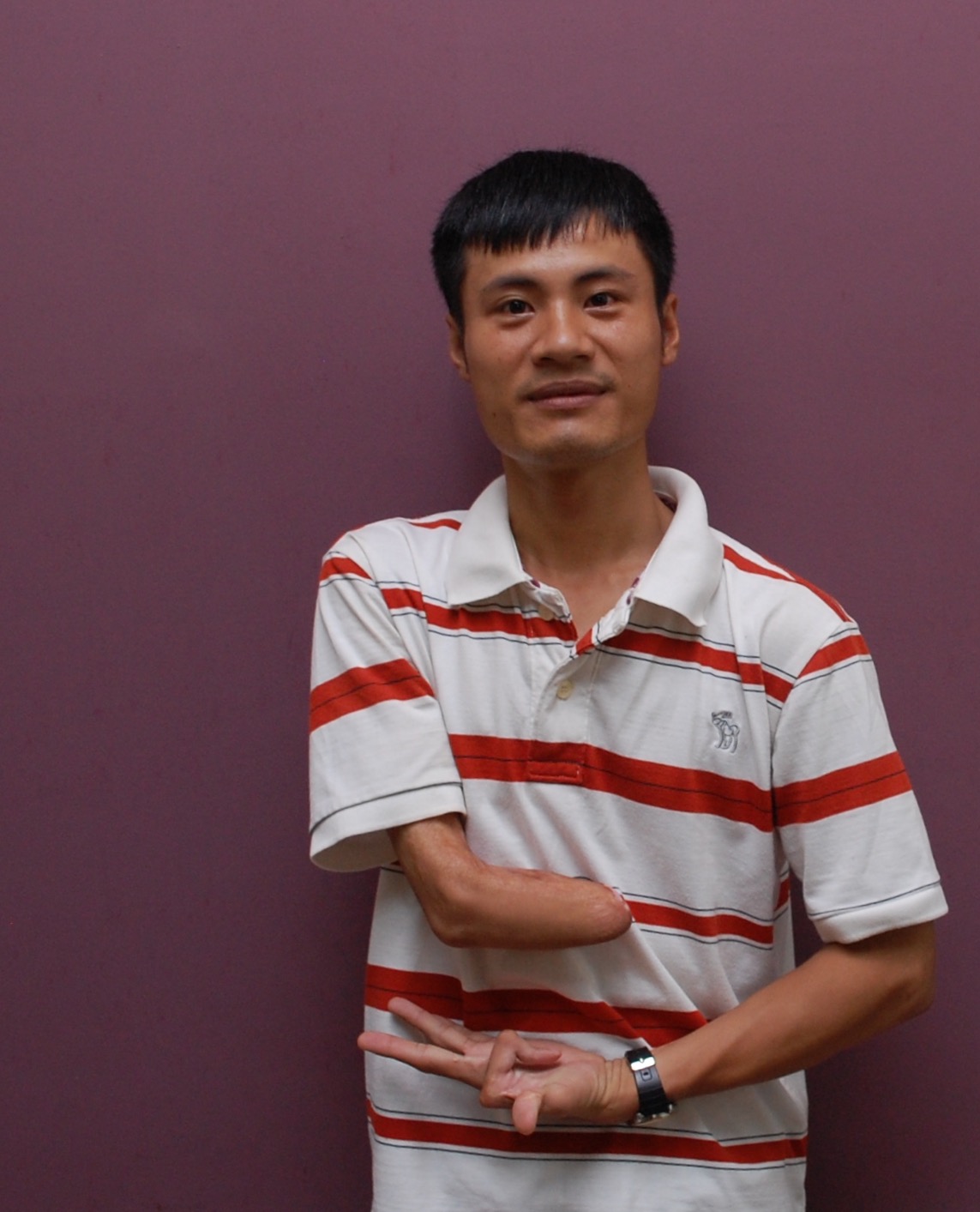
Nguyen Xuan Tuan was sixteen and a tenth grader living in the Cam Lo District of Quang Tri Province just three kilometers from Camp Carroll the former U.S. artillery base off Highway 9. He told me that he and some friends went up Hill 241 with a homemade metal detector trying to find scrap metal they could sell to earn some money.
Tuan said he was digging with a shovel when the anti-personnel bomb exploded knocking him unconscious. He awoke from his comma after two days in the hospital. But even after his discharge he was unable to walk. Without the use of his right arm for writing, he dropped out of school. He now splits his time volunteering at the center and selling lottery tickets to supplement the funds he gets from the government, allowing him to rent a room in Dong Ha and some independence.
As we were getting ready to leave the Mine Action Center, I overheard Lai as he turned to . Chuck Searcy, a founder and senior advisor to Project RENEW and privately spoke, “I am doubtful about my life and my future. You think I can have a productive life?”
I am adding a photo of Chuck Searcy and some of the anti-personnel bombs. They are small. The U.S. military packed hundreds within one larger “mother” bomb. Why are they called anti-personnel bombs? Because they are useless destroying buildings or military targets. Their only value is to kill, maim and terrorize the population. And that continues to this day.
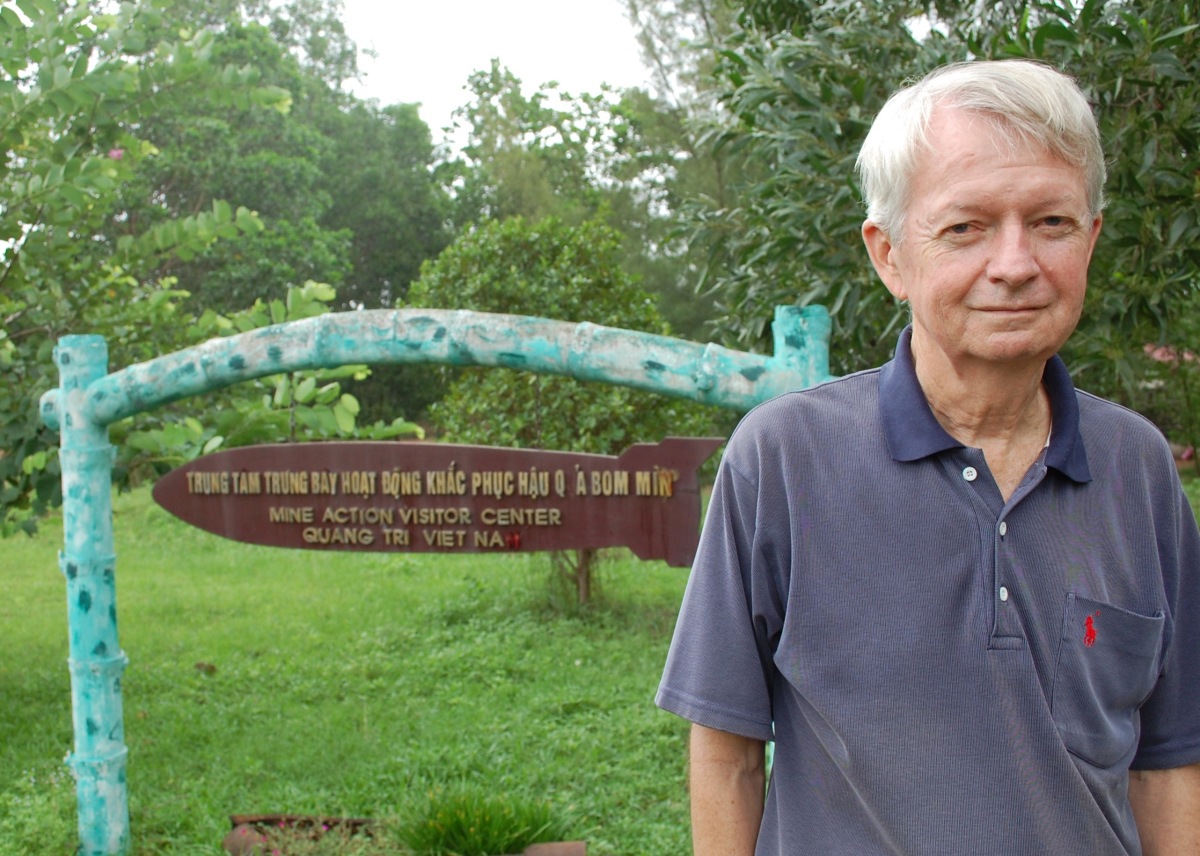
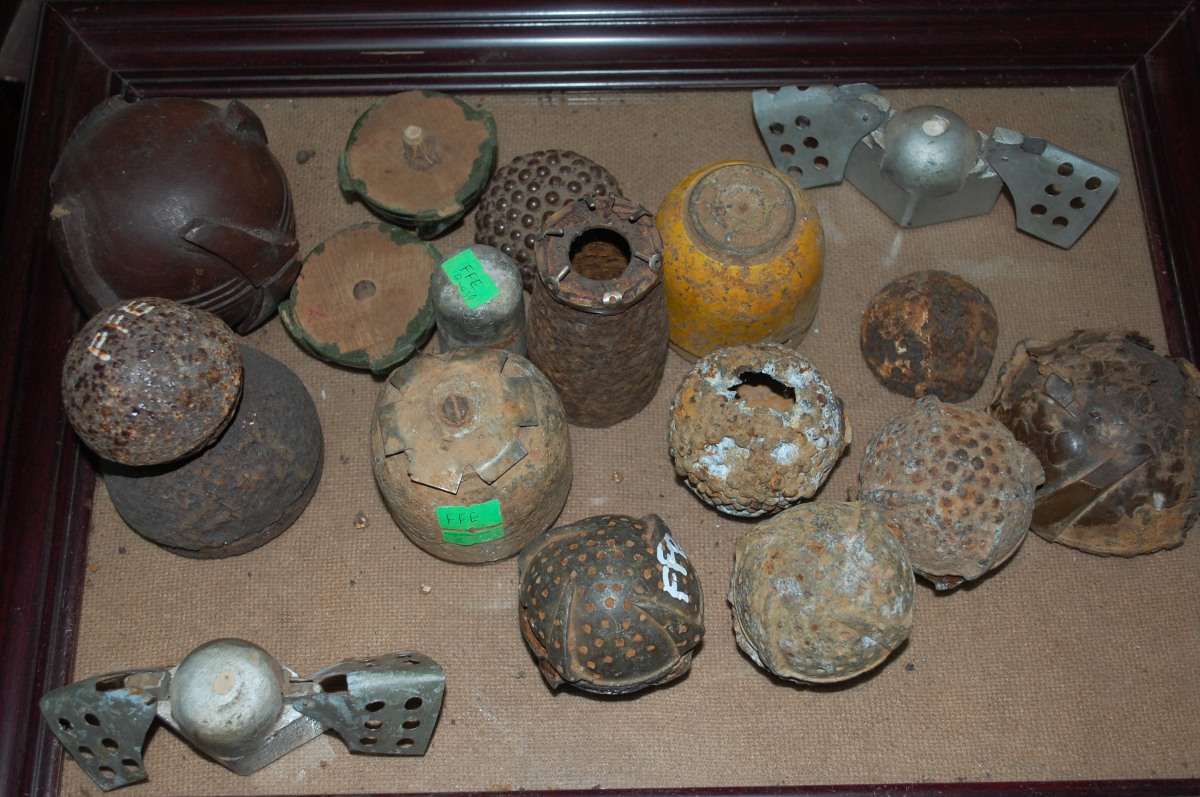
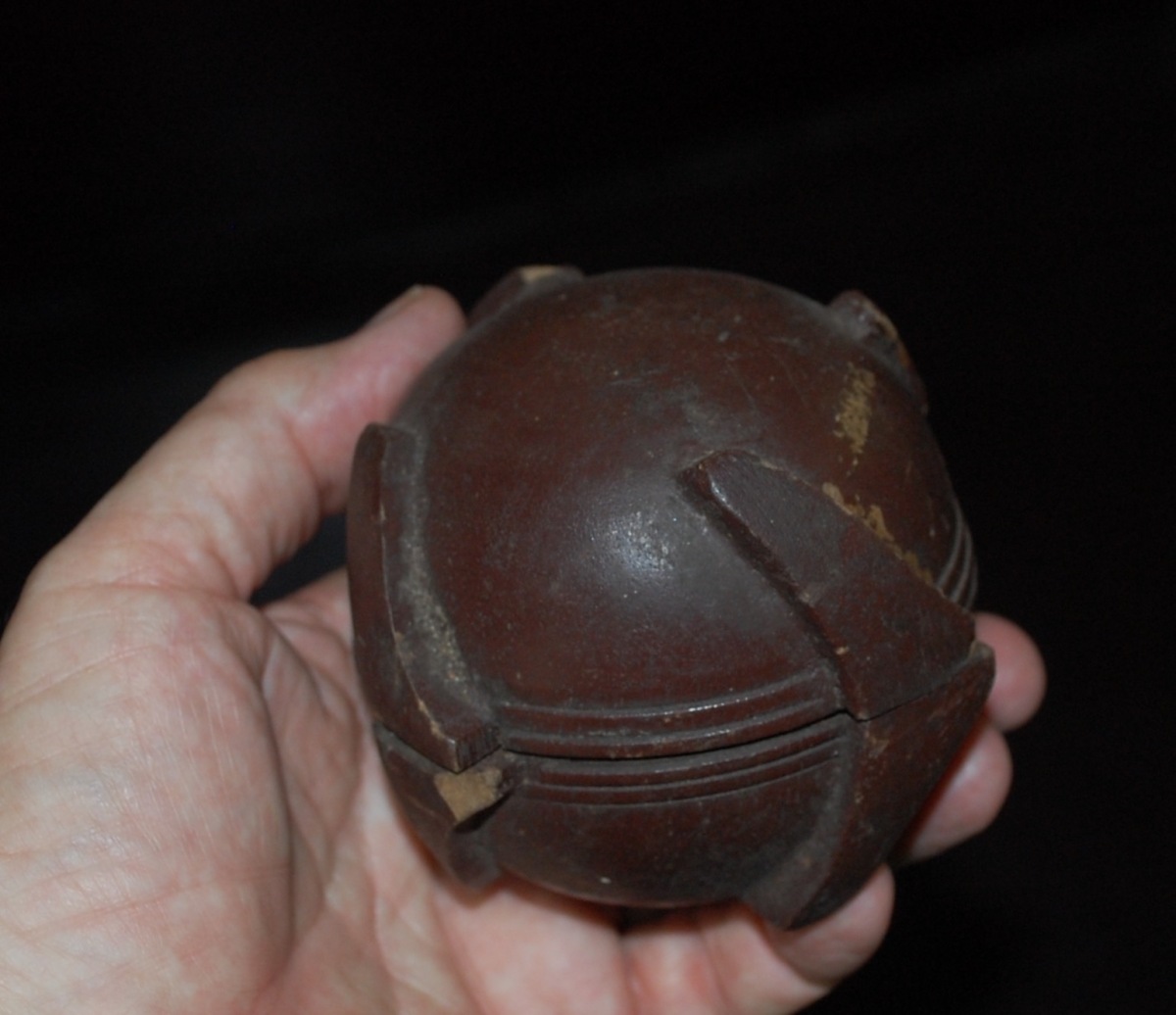

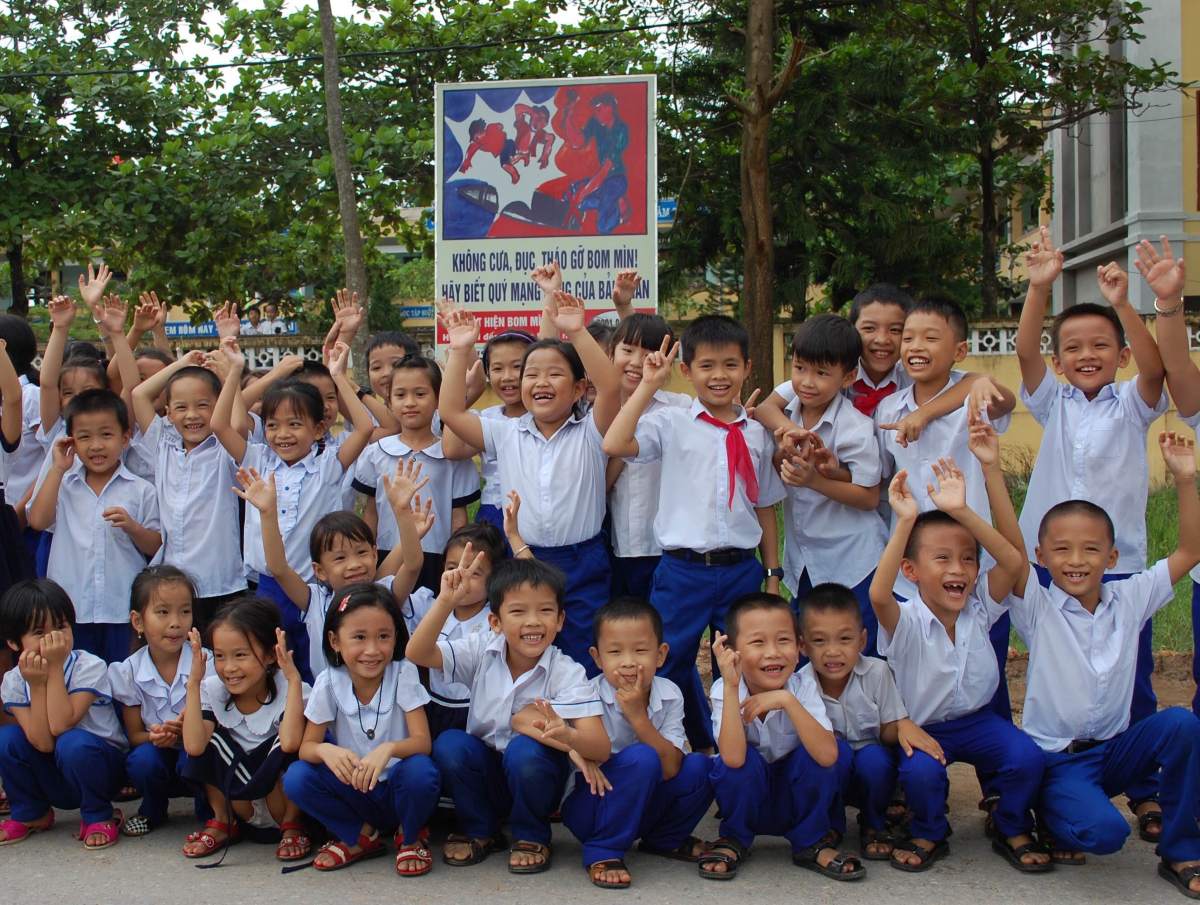
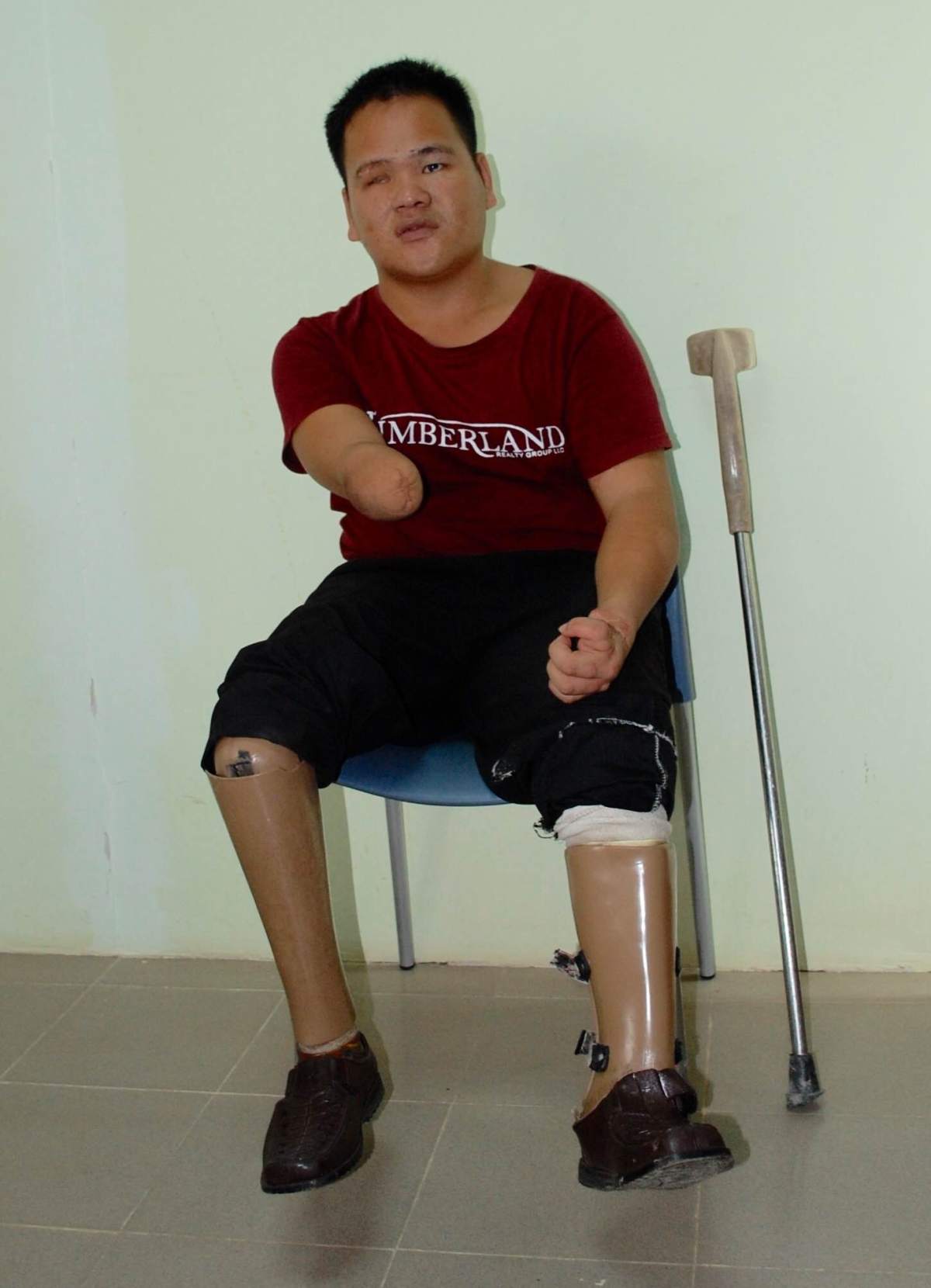
In 2008, an international Convention was adopted, prohibiting the manufacture and use of cluster munitions. But of course the millions of unexploded cluster bomblets remain a plague in Vietnam, Laos and other countries. Learn some more about it here: http://legaciesofwar.org/about-laos/cluster-munitions/
And here is a page focusing on Laos as well, perhaps the most bombed country in history, In the course of a secret war against Laos, basically designed to depopulate the country to end support for the Pathet Lao, the U.S. dropped 260 million cluster bombs on this small country: http://legaciesofwar.org/resources/books-documents/land-of-a-million-bombs/ About 30% of them didn’t explode immediately.
LikeLike